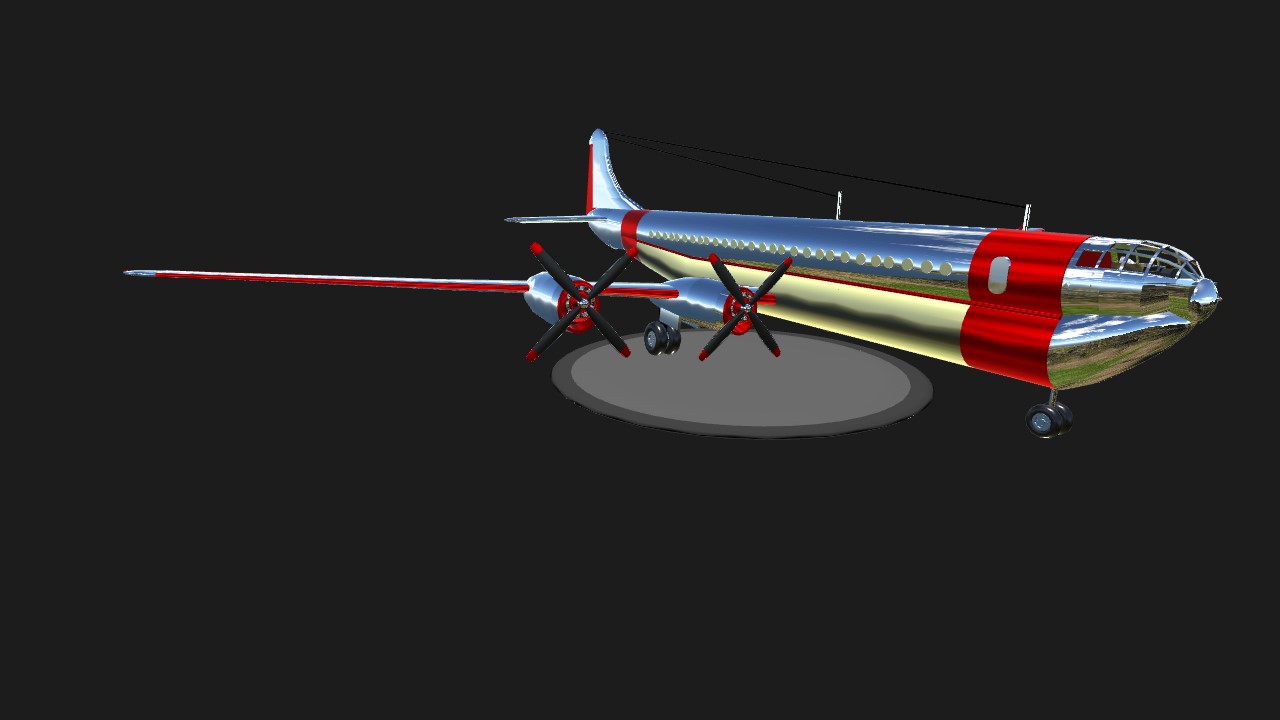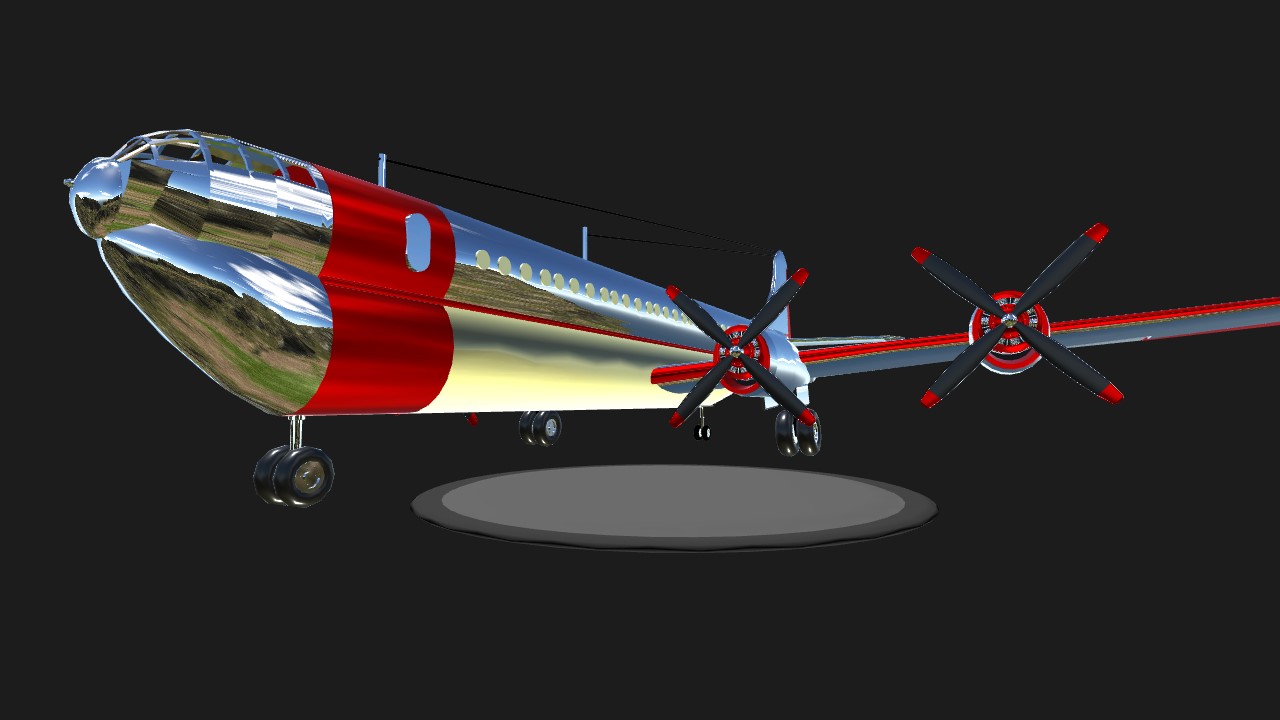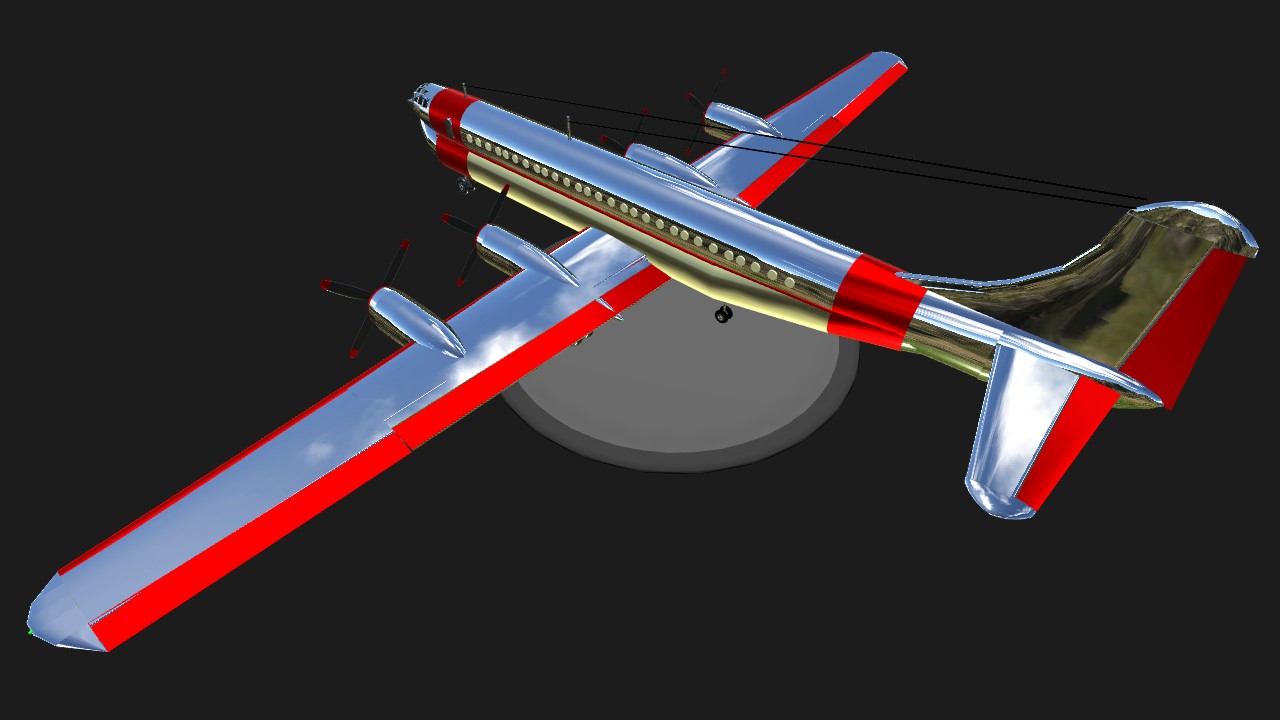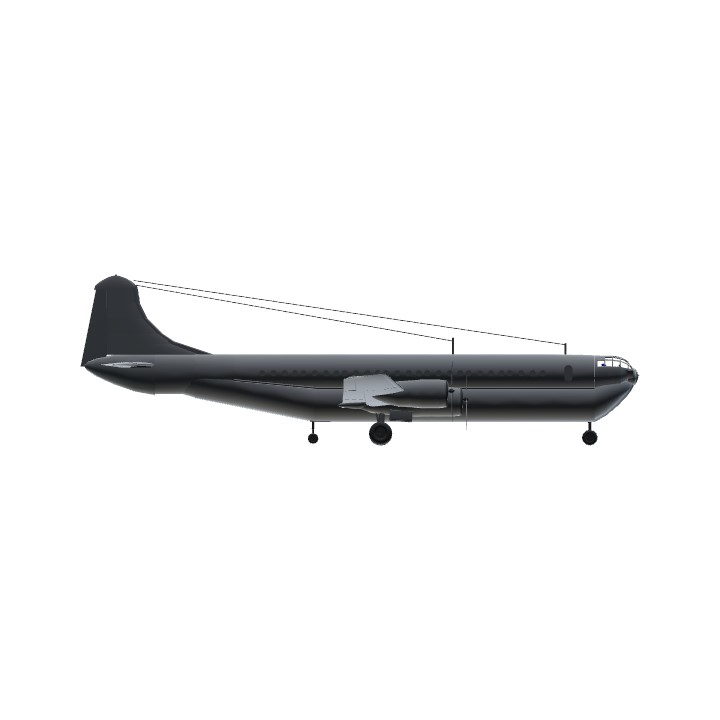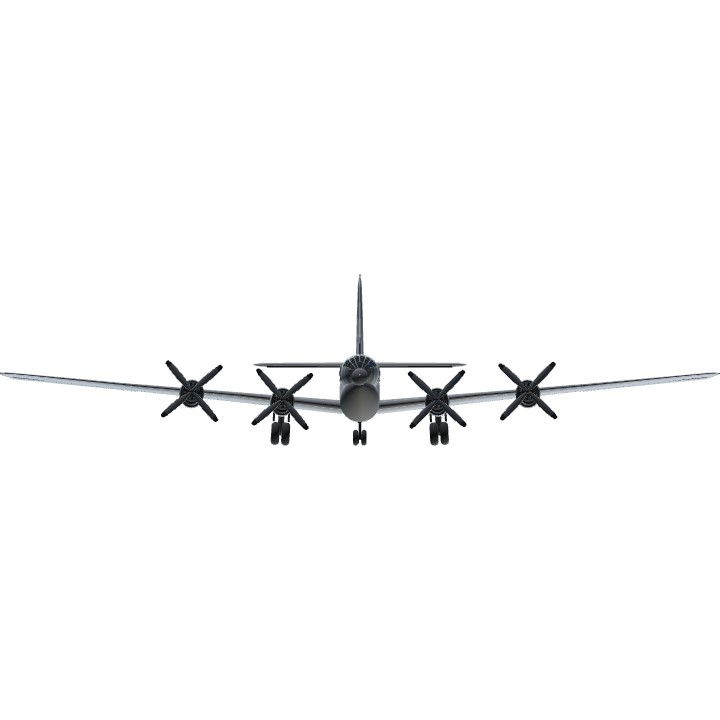A much, Much more accurate version of the Boeing 377 Stratocruiser for my entry into the Vintage airliner contest, properly weighted, blueprint shaped, proper dimensions and engine power. Functional cockpit that has been repaired. AG 1 turns on cabin lights, VTOL controls TOoL flaps, Trim controls extra bits to keep this hefty plane level.
The Boeing 377 Stratocruiser was a large long-range airliner developed from the C-97 Stratofreighter military transport, itself a derivative of the B-29 Superfortress. The Stratocruiser's first flight was on July 8, 1947. Its design was advanced for its day; its innovative features included two passenger decks and a pressurized cabin, a relatively new feature on transport aircraft. It could carry up to 100 passengers on the main deck plus 14 in the lower deck lounge; typical seating was for 63 or 84 passengers or 28 berthed and five seated passengers.
The Stratocruiser was larger than the Douglas DC-6 and Lockheed Constellation and cost more to buy and operate. Its reliability was poor, chiefly due to problems with the four 28-cylinder Pratt & Whitney R-4360 Wasp Major radial engines and structural and control problems with their propellers. Only 55 Model 377s were built for airlines, along with the single prototype. The 377 was also converted into the Aero Spacelines Pregnant Guppy by John M. Conroy for NASA’s Gemini space program.
Specifications
Spotlights
- NormalCv580enjoyer 1.8 years ago
General Characteristics
- Predecessor Vintage Airliner Challenge [CLOSED]
- Created On Windows
- Wingspan 143.1ft (43.6m)
- Length 111.0ft (33.8m)
- Height 34.0ft (10.4m)
- Empty Weight N/A
- Loaded Weight 88,126lbs (39,973kg)
Performance
- Horse Power/Weight Ratio 0.158
- Wing Loading 13.1lbs/ft2 (63.7kg/m2)
- Wing Area 6,749.6ft2 (627.1m2)
- Drag Points 31674
Parts
- Number of Parts 561
- Control Surfaces 2
- Performance Cost 2,485

